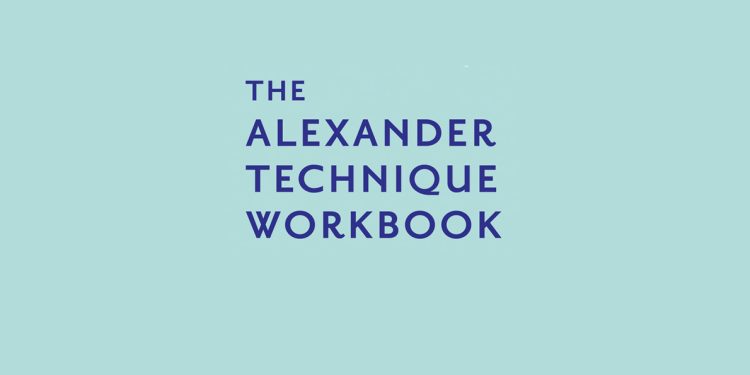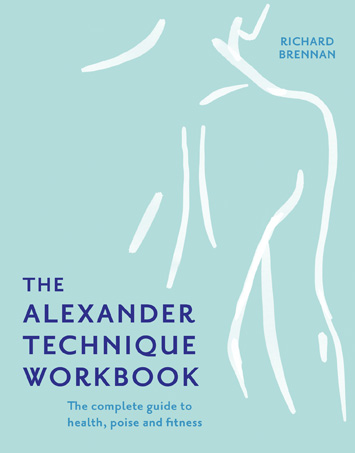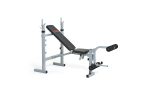The Alexander Technique Workbook by Richard Brennan – Review

By Elizabeth Stanforth-Sharpe
I found myself instinctively checking my posture as I read Richard Brennan’s paperback re-print of his seminal The Alexander Technique Workbook. The step-by-step guide has sold over 100,000 copies since it was first written, partly because it is so accessible, instructing and explaining the principles behind a set of simple exercises to keep the muscles moving effectively.
The Alexander Technique was developed in 1890 by Frederick Matthias Alexander. Alexander had been a promising doctor, but suffered with recurring vocal problems, for which there seemed to be no physical cause. He concluded that he must be using the muscles wrongly, straining the voice. By watching himself in mirrors, he noticed that he tended to stiffen his back, pulling his head back and down, which meant that his larynx was being depressed, causing him to be gasping for air and unable to use his voice effectively. He investigated further and realised that he was holding patterns of tension throughout the rest of his body. Having ascertained what the problem was, Alexander spent several years working out how to realign his posture effectively, improving his overall health and gaining full power of his breath control and speech. When they saw the results, doctors began to refer patients to him, and he set up a thriving London practice teaching the method, until his death in 1955. Neurological scientists attested the Alexander Technique as consistent with their own studies; most prominently, Nikolaas Tinberg, in his acceptance of theNobel Laureate in 1973, dedicated a significant part of his speech to the success of the Alexander Technique.
Richard Brennan found relief from back problems and sciatica through using the Alexander Technique and was so impressed by his own recovery that he went on to train as a practitioner, writing six books on the subject. In The Alexander Technique Workbook, first published in 2011, Brennan gives a very practical guide, designed to make the exercises available to those who do not have ready access to a trained Alexander teacher. It begins with an overview of the history and basic principles involved, followed by an understanding outline of how underlying stress and tension can form posture habits that are hard to break. It then moves through teaching awareness, how to make a habit-changing goal, terminology and what to expect from Alexander lessons, all interspersed with exercises that anyone can do in their own home and with limited resources.
“Learned a great deal”
 The re-print, for a relatively slim volume, packs in a great deal of information, with updated websites and lists of further reading around the subject. The original was hardback and difficult to lay flat because of the binding. The paperback attempts to overcomes that issue by using a plastic comb binding and setting the inner pages landscape inside a portrait cover; it certainly allows the pages to fall open flat when placed on a table but comes with two problems. The book has no card covers, so the flimsiness of paper (and an acetate frontage) alone doesn’t allow it to be propped sufficiently when doing the exercises, and the comb binding is not substantial enough to withstand the wear and tear of regular use. I gave this book a two-week trial workout before writing my review, and it hasn’t survived well. It’s a careless design fault that could have been easily remedied by using a stiff cardboard back cover and a more substantial lay flat or Otabind spine. The print is tiny and the odd numbered exercise pages are in the wrong orientation to aid floor exercises.
The re-print, for a relatively slim volume, packs in a great deal of information, with updated websites and lists of further reading around the subject. The original was hardback and difficult to lay flat because of the binding. The paperback attempts to overcomes that issue by using a plastic comb binding and setting the inner pages landscape inside a portrait cover; it certainly allows the pages to fall open flat when placed on a table but comes with two problems. The book has no card covers, so the flimsiness of paper (and an acetate frontage) alone doesn’t allow it to be propped sufficiently when doing the exercises, and the comb binding is not substantial enough to withstand the wear and tear of regular use. I gave this book a two-week trial workout before writing my review, and it hasn’t survived well. It’s a careless design fault that could have been easily remedied by using a stiff cardboard back cover and a more substantial lay flat or Otabind spine. The print is tiny and the odd numbered exercise pages are in the wrong orientation to aid floor exercises.
There is some excellent information in this book, and it may be a useful resource to those who want to learn the Alexander technique, and absolutely cannot find a teacher nearby or a good video online, but its construction lets it down. I learned a great deal by reading it as a mere book, but it is, by its own titular definition, a workbook, and as such, it hasn’t been well thought through. It’s a shame; working from home, using kitchen tables as make-shift desks and leaving the ergonomically designed office chairs behind, has taken its toll on many people’s well-being, fitness and posture, and the Alexander technique as much to offer in terms of restoration. As a paperback, this is cheaper than the hardback version, but quite frankly, it’s a false economy to buy something that is not going to last well and doesn’t perform its function, and the frustrations that come in trying to balance the book whilst following the step-by-steps may be a new source of tension in themselves.
‘The Alexander Technique Workbook’ by Richard Brennan is published by HarperCollins, £16.99 paperback









